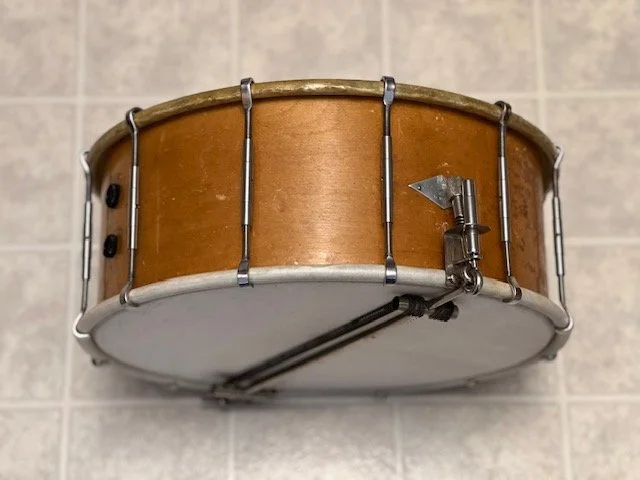Edward Tucker Studio 3T Restorations
This set was born together and still with the one and only original owner whose parents purchased it for him brand spanking new in 1970. He played it for about a year with his cousin in a little band in his basement and never again after that. The set NEVER left his house and was NEVER played out. He also immaculately cared for it keeping it under cover.
The drum is only one of two (one is in the drum museum in the Midwest) known in this style, and even these two are both different.
This 1936 Slingerland catalog also has some of the most glorious color palettes of drum sets ever displayed between its pages. The center fold out is spectacular as well, showing the finest available drum finishes in all their grandeur.
I was privileged enough to receive two very special Limited Edition Radio King first serial number 1s of 50 of the 5“ x 14“ vintage black and gold lacquer and the 7” x 14” black diamond pearl wrap snare drums. -Ed Tucker
I purchased one catalog cover of three for sale by accident thinking it was a whole catalog for only a couple dollars. Then a lightbulb went off - I’ll make a framed piece of artwork!
This is the long lost twin of a personal pair of these custom made snares for Elvins 75th birthday celebration and were never available to the public. At 5” x 10” it is little piece of dynamite.
In today’s corner I present to you one of the rarest catalogs from one of the most difficult eras to find any drum catalog from, early 1940s World War II.
Here is a rare Slingerland snare that has a very interesting story of metamorphosis.
It first appears in the 1959 catalog as a “New Brass Shell Snare Drum” showing in either clear lacquered brass or chrome plating.
Before these drums the interiors and bearing edges of most drums were not what you would call to the highest standards. The interior of these drums, the bearing edges and the outer shell are pure perfection, they feel like glass everywhere you run your finger, there is not a single rough spot, gap, glue, bump, separation or ripple anywhere.










The insert highlighted in my column this month is one of the earliest known examples. It was actually in the 1909 Leedy edition as well as their 1910.